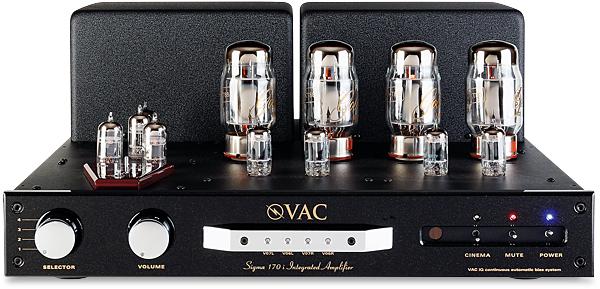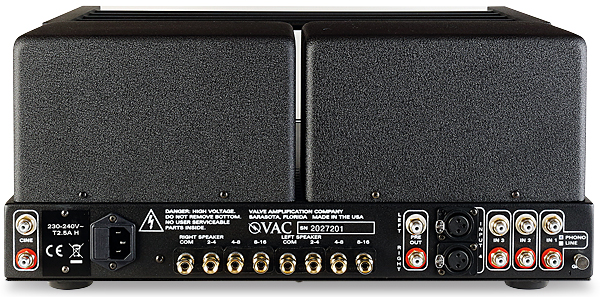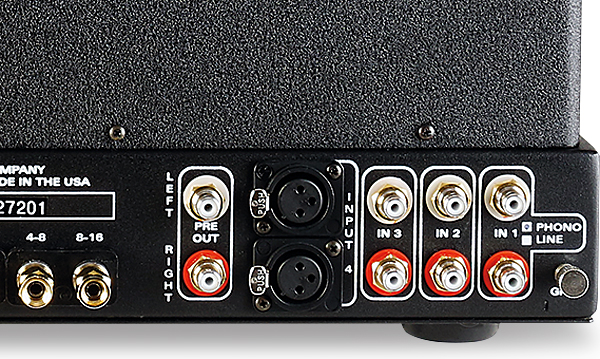VAC Sigma 170i Integrated Amplifier

 Hot on the heels of VAC's flagship separates stack on our March '21 cover comes the more affordable derivative, the integrated VAC Sigma 170i – is it a true Mini-Me?
Hot on the heels of VAC's flagship separates stack on our March '21 cover comes the more affordable derivative, the integrated VAC Sigma 170i – is it a true Mini-Me?
If I wasn't averse to tattoos, I'd have one that says, 'Always Read The Owner's Manual First'. I spent so much time trying to illuminate the VAC Sigma 170i's iQ warning lights that I was wondering if the review sample was a dud. Doh: in this application, the £10,000 single-chassis alternative to the Signature stack [HFN Mar '21], they don't light up at switch-on. Here they only work when something is amiss. Blast it! I never did see them in action.
How so? That's because this 'baby' VAC integrated never missed a beat. If anything, I spent all my time marvelling at the mix of grace and grunt, for this compact unit defies the potential of its valve complement, a 'mere' quartet of KT88s. Not quite a 'beast', perhaps, but the cautious factory rating of 85W is more than met by PM's measurements. But at £10k, any amp should be a powerhouse, save for single-ended triodes of the sub-10W variety.
Fully Loaded
Our black-metal-flake-painted review sample (silver is an option) came fully-loaded, allowing me to exploit a couple of sources in balanced mode. The optional extras add £3700 to the mix; they include the balanced XLR input for £800, the MM/MC £1500 phono stage and – wholly an aesthetic choice but worth the added protection of the glassware – the cool glass/metal cage at £1400.

Back to the iQ 'Continuous Automatic Bias System'. It operates at all times, keeping an 'i' on the valves with one LED per tube. The lights glow green for a weak tube, or red for a failed tube or if it detects any potentially terminal issue, operating in advance to protect the unit. Green merely suggests replacing the valve at your convenience; red calls for turning off the Sigma 170i and replacing the duff tube when it cools down completely.
Why should this matter? Those weaned on valves during the dark years of 1970-1985 (like me), when replacements were hard to get, will value anything that provides peace of mind. Valve aficionados circa-2021? Consider yourselves blessed, as tubes are no longer as rare as Beluga. VAC uses octal-based KT88s, but one mustn't be tempted to fiddle with others of that fitting. Founder and CEO Kevin Hayes explained to me that he chose the KT88 as a tried-and-tested tube of true merit, and he is not one swayed by trends.
Integrated valve amps have been tempting me and diverting me from separates frequently of late, especially since I added the EAT E-Glo i [HFN Oct '20] to my review system as an exemplar of the genre. The Sigma 170i perfectly reflects its two primary virtues: convenience and compactness. Less critical for many will be the need for one less AC outlet, or one less pair of interconnects (between preamp and power amp). In my case, space-saving alone is a worthwhile reason to consider an integrated alternative.

Perfect Match
As our pictures here illustrate, too, the Sigma 170i is less complicated to set up than its dearer sibling, with no confusing, dedicated inputs. Blessedly, it provides multiple taps for speakers and I was able to try all three, enjoying a perfect match for Falcon Acoustics' 15ohm LS3/5As [HFN Dec '18], a cluster of nominally 8ohm models, and the 4ohm Wilson Sasha DAWs [HFN Mar '19].
The back panel is self-explanatory but note that the optional phono module takes over Input 1, with controls fitted to the top plate rather than the fascia. Here you'll find toggles to select MM or MC, the latter with three possible settings of 100, 200 and 470ohm. Around the back there are also 'cine' throughput sockets and preamp output RCAs next to the XLR balanced inputs. The front panel, too, is self-explanatory and while the supplied remote control only operates mute and level via a motorised analogue pot, how often do you have two sources running concurrently?
![]() Lush Life
Lush Life
Up-and-running in mere minutes, the VAC Sigma 170i – even before any lengthy warm-up – revealed itself to be a thoroughbred of classic valve sound. Hayes favours, I believe, ultralinear over triode, and I have no issue with that whatsoever. While hands-on perfectionists might prefer having the facility to access both, at no point was I feeling the need for any added warmth or whatever else is attributed to pure triode operation.

























































